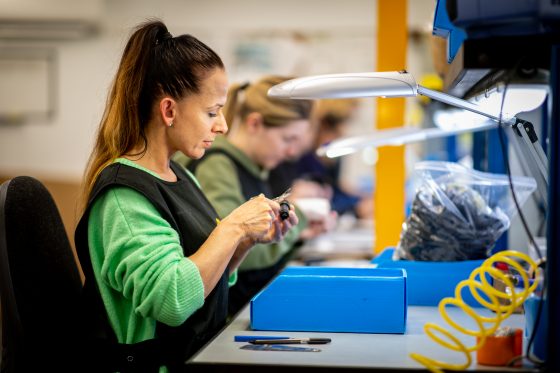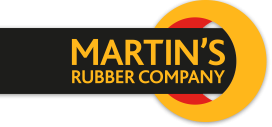What is Vulcanised Rubber Used For?
Posted on 27/01/2020 Category: Rubber Bondings

The story of vulcanised rubber stretches back thousands of years, from ancient Mexican civilisations to modern-day tyre manufacture. Along the way, notable luminaries such as Charles Goodyear and Charles Macintosh played a major role in its development. Here, Martin’s Rubber gives you a fascinating insight into the discovery, production, and uses of vulcanised rubber.
What is vulcanised rubber?
Vulcanisation is the process of curing elastomers. It involves treating natural rubber with sulphur or other curatives (such as peroxide and metal oxides) to form cross-links between sections of a polymer chain, producing a rubberised material boasting excellent rigidity and durability.
A brief history of vulcanised rubber
Mexico’s earliest known major civilisation, the Olmecs, are thought to have combined the boiled sap of the Pará rubber tree (hevea brasiliensis) with a vine sap to create the first primitive form of vulcanised rubber. They used the resulting material to waterproof their clothes and for ritualistic ball games.
In the 1820s, Scottish chemist Charles Macintosh and English inventor Thomas Hancock refined the age-old Olmec process by dissolving natural rubber in benzene and heating it to produce the first mass-produced rubber sheeting. This gave rise to the famous “Mackintosh” waterproof fabric (constant misspelling meant that the additional ‘k’ stuck!).
This material was later refined by adding sulphur to create a more thermally stable material. This discovery is widely credited to Charles Goodyear but patented by Macintosh. He named it “vulcanisation” after Vulcan, the Roman god of fire. This essentially paved the way for the enduring Mackintosh jacket design and many other valuable rubber products.
What is vulcanised rubber used for?
Vulcanised rubber is used to manufacture all sorts of products today. Perhaps the best-known and most prevalent use of vulcanised rubber is vehicle tyres, commonly combined with the reinforcing carbon black agent for even greater strength. Over a billion tyres are manufactured worldwide annually, making the tyre industry one of the foremost consumers of vulcanised rubber.
Other common vulcanised rubber uses include:
- Rubber hoses
- Shoe soles
- Toys
- Erasers
- Conveyor belts
- Shock absorbers
- Rubber-lined tanks
- Vibration dampers
- Insulation
Benefits of vulcanised rubber
Vulcanisation causes the rubber to shrink while still retaining its original shape. The vulcanisation process also hardens the rubber, making it less susceptible to deformation, particularly compared to non-vulcanised rubber material, which will deform far more quickly under stress. This hardening of the rubber also increases its tensile strength.
Further benefits of vulcanised rubber include:
- Excellent resilience.
- Returns to its original shape.
- Low water absorption.
- High resistance to oxidation and abrasion.
- Good electrical insulator.
- Resistant to organic solvents.
Find your perfect vulcanised rubber solution here at Martins Rubber
If you are interested in developing vulcanised rubber products, speak to a Martin’s Rubber technical rubber expert today. We combine technical expertise with more than 150 years of experience in the rubber manufacturing company to produce the highest quality rubber products available anywhere in the UK.
For any questions, be sure to contact us, and a member of our team will be happy to help. If you want to learn more about vulcainsed rubber and all we do here at Martins Rubber, be sure to check out our technical articles.


